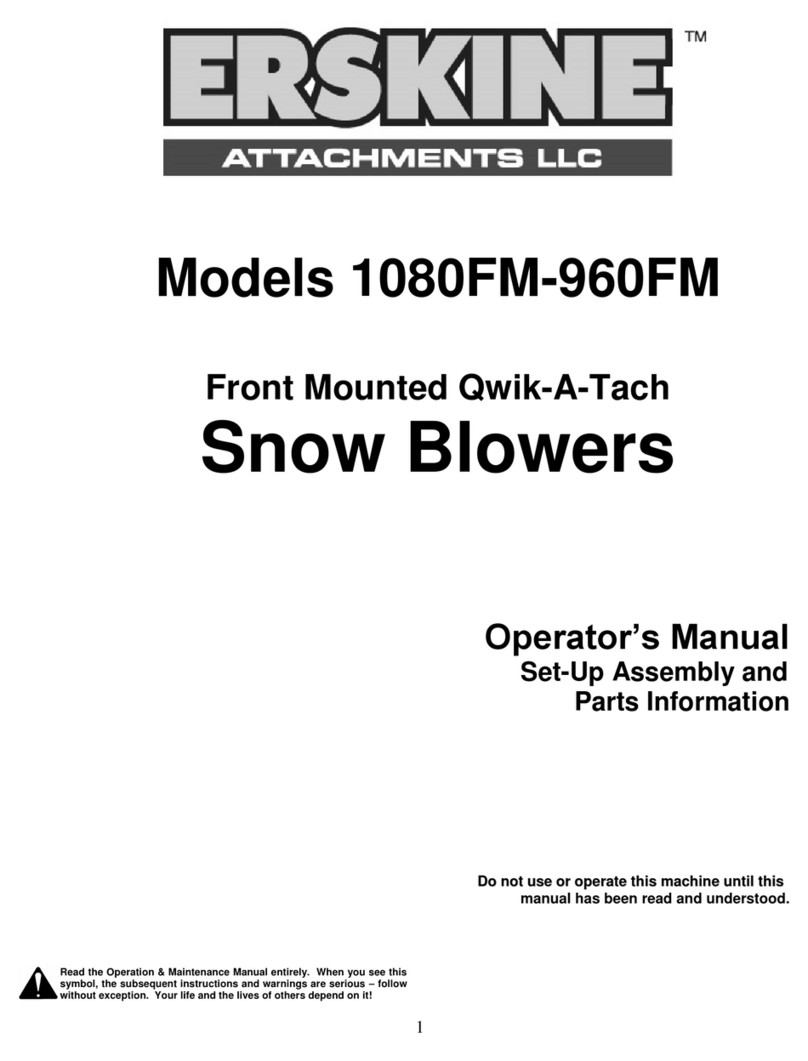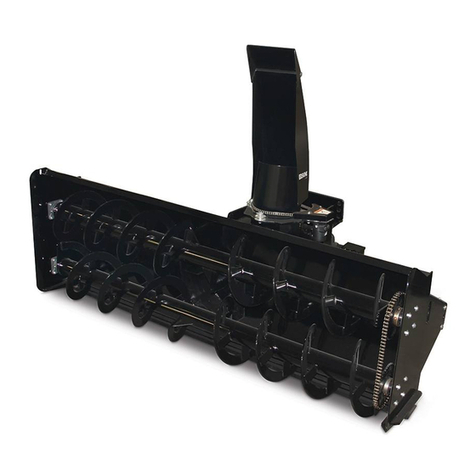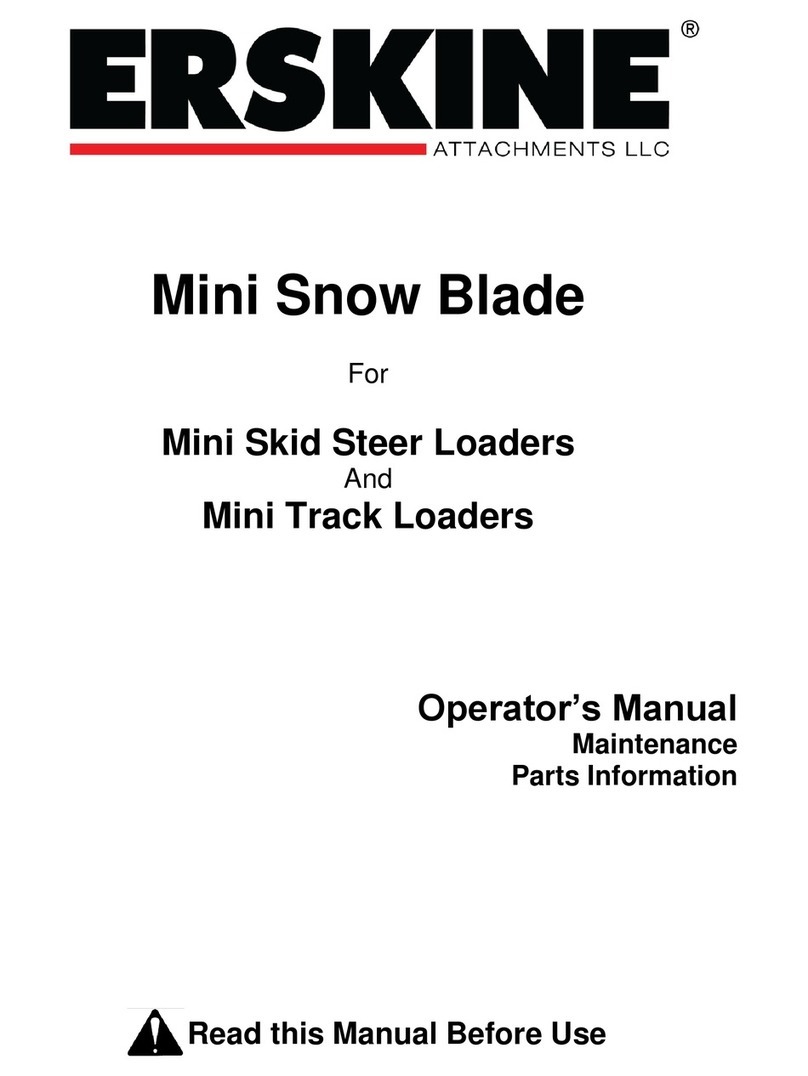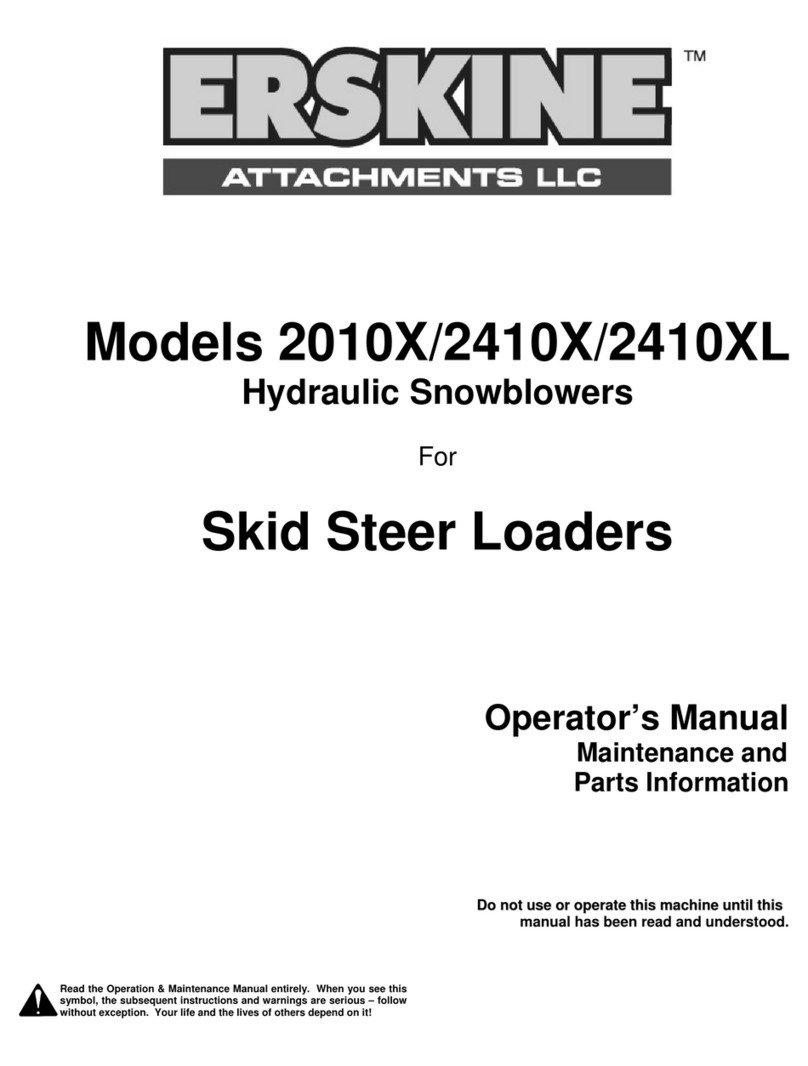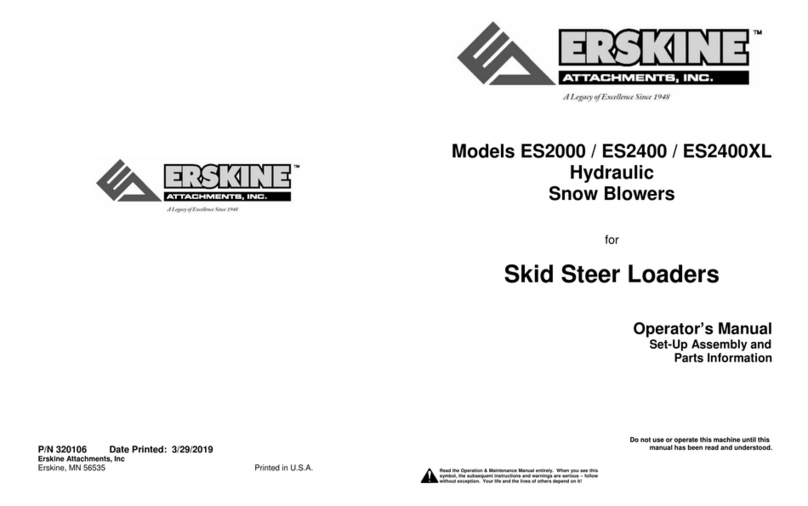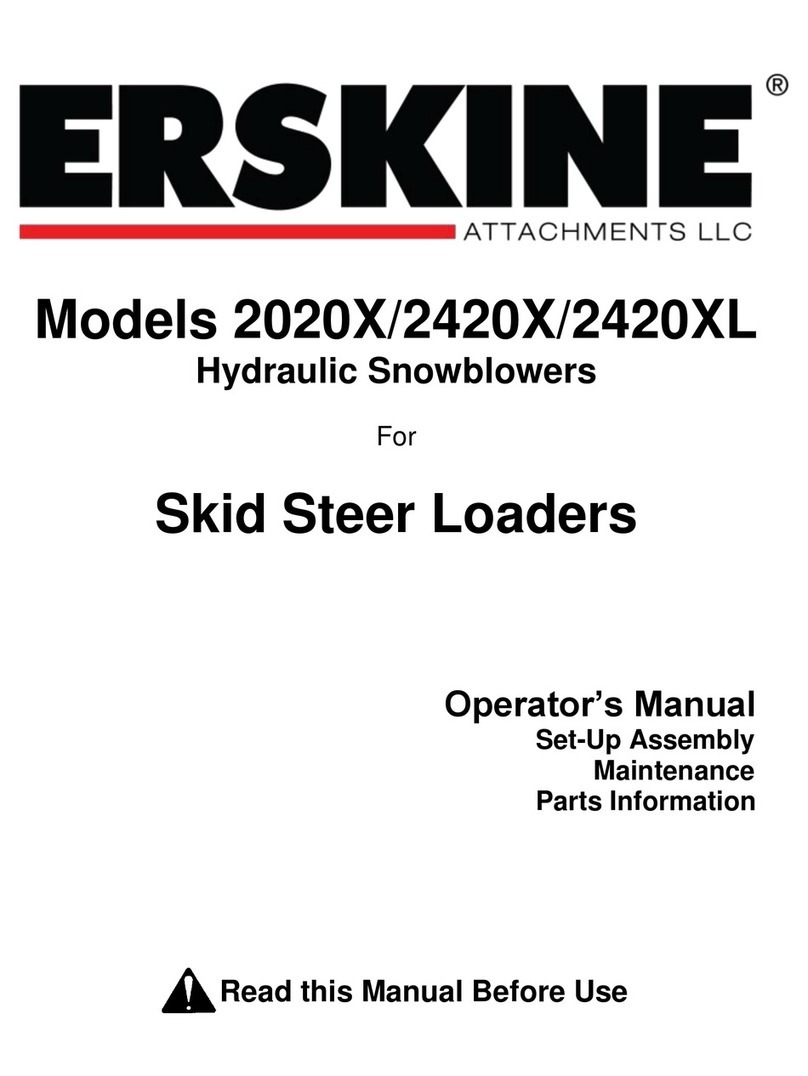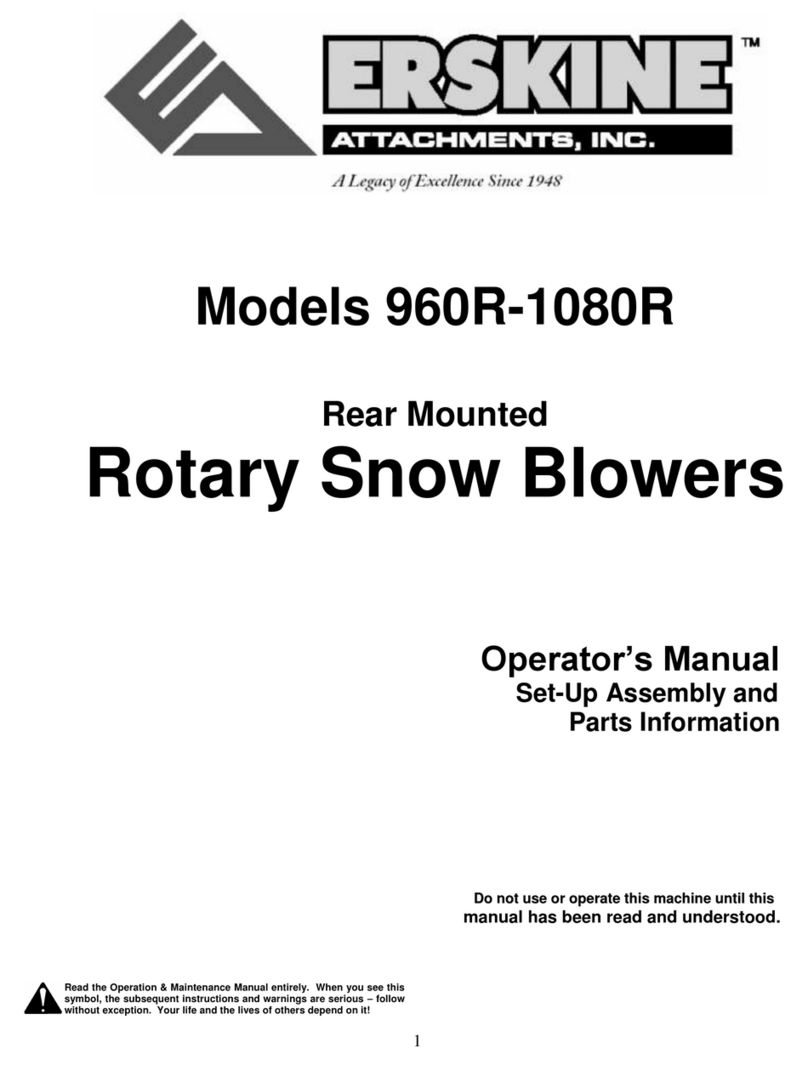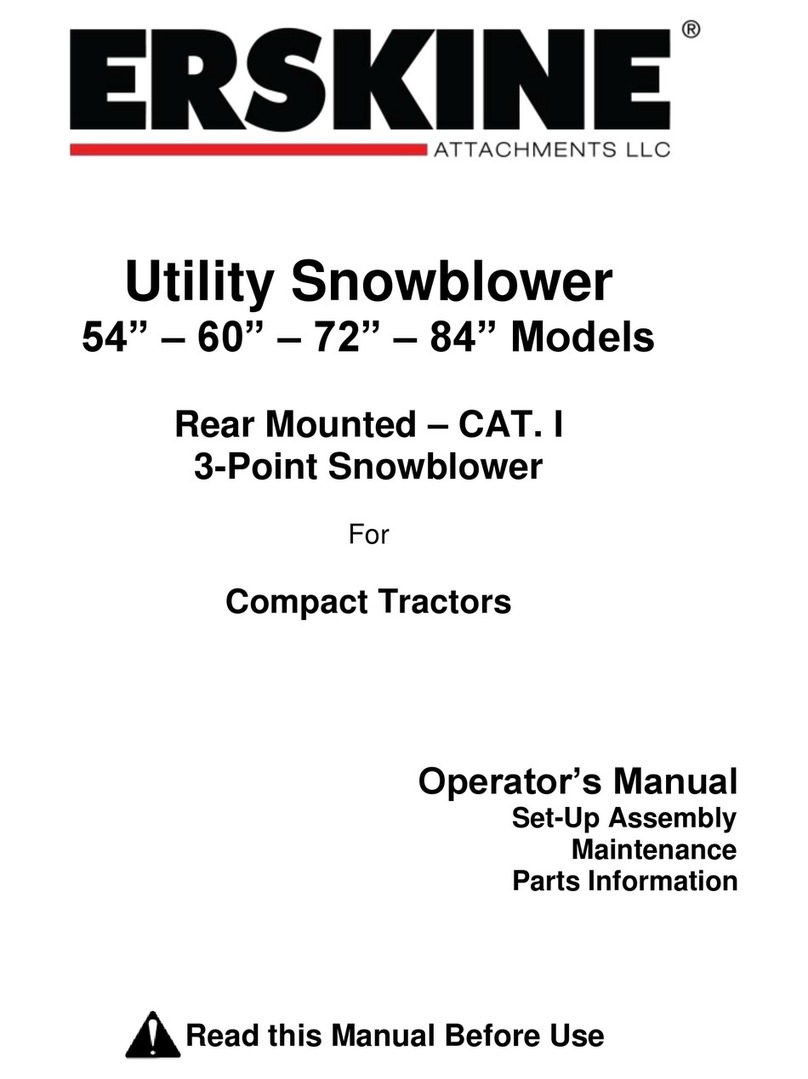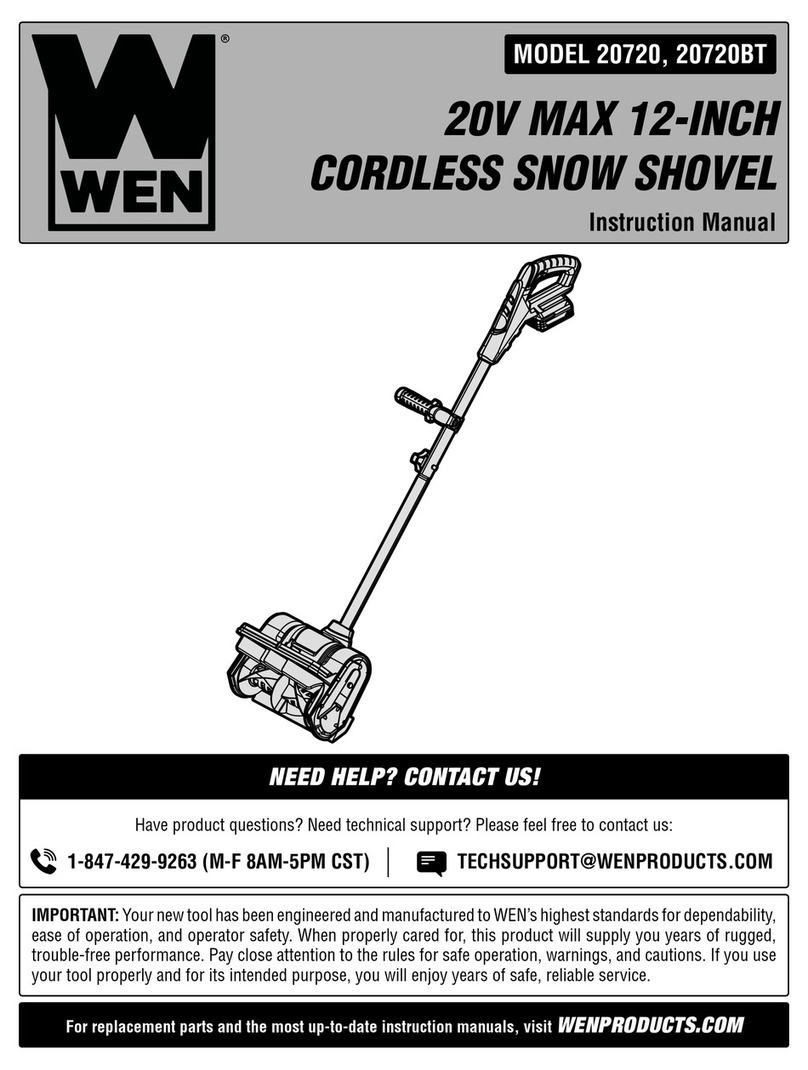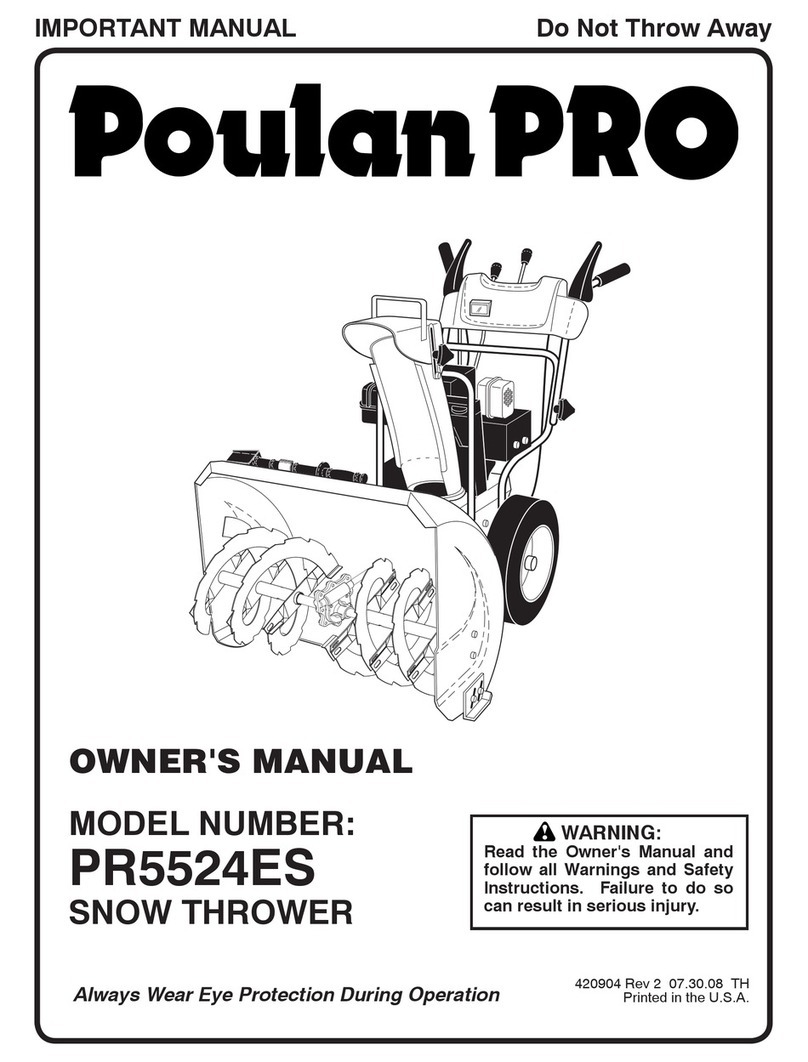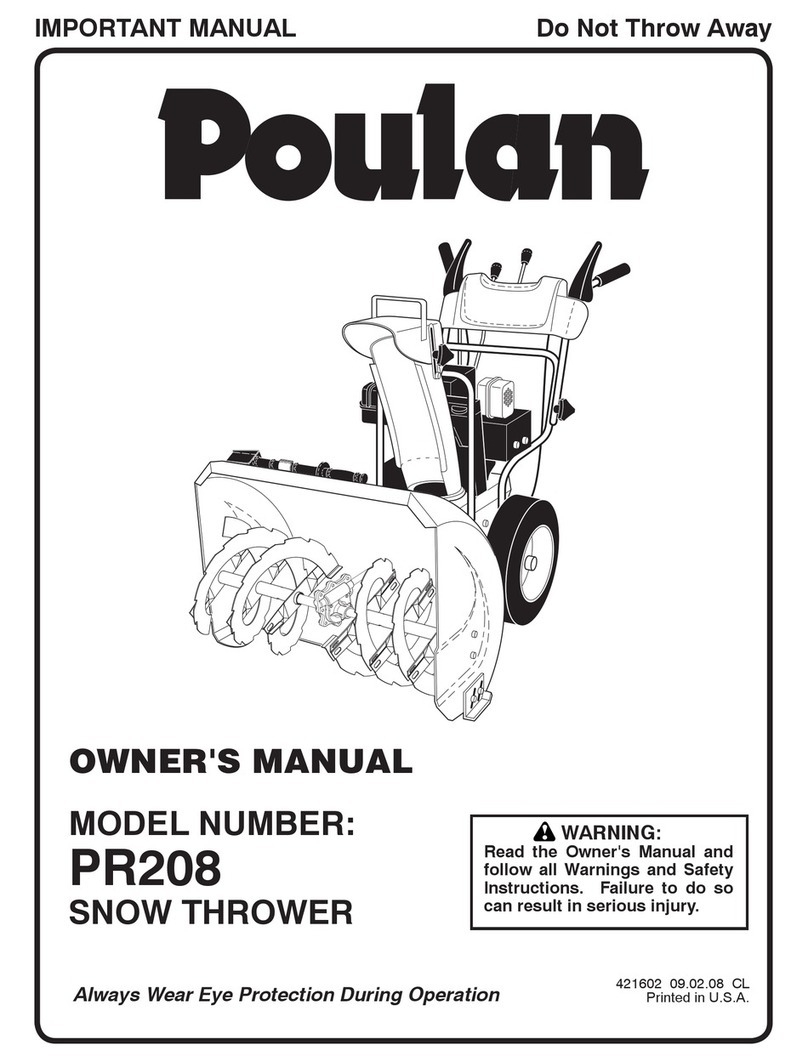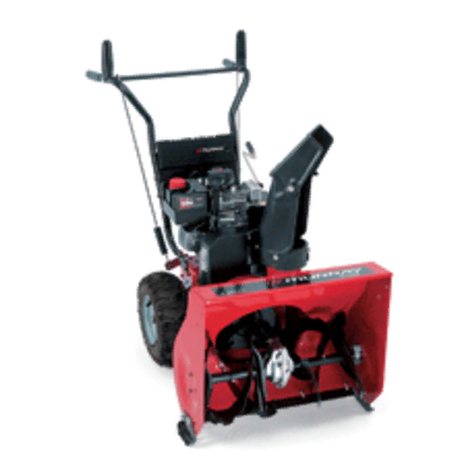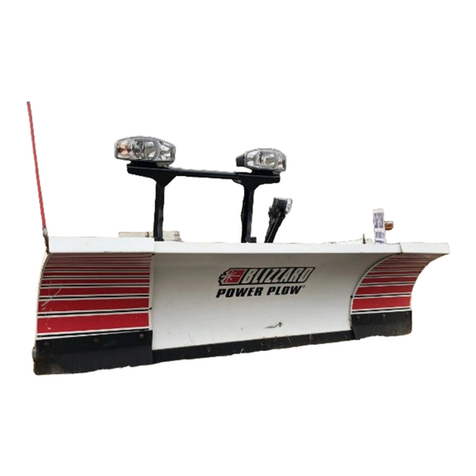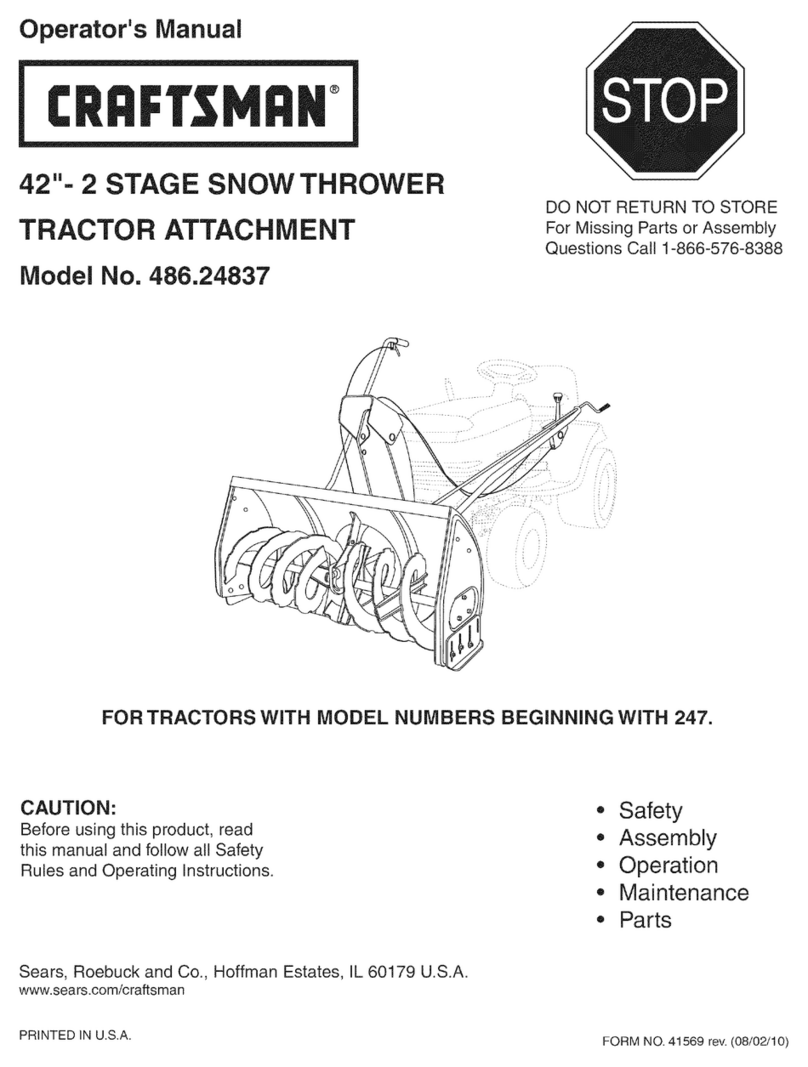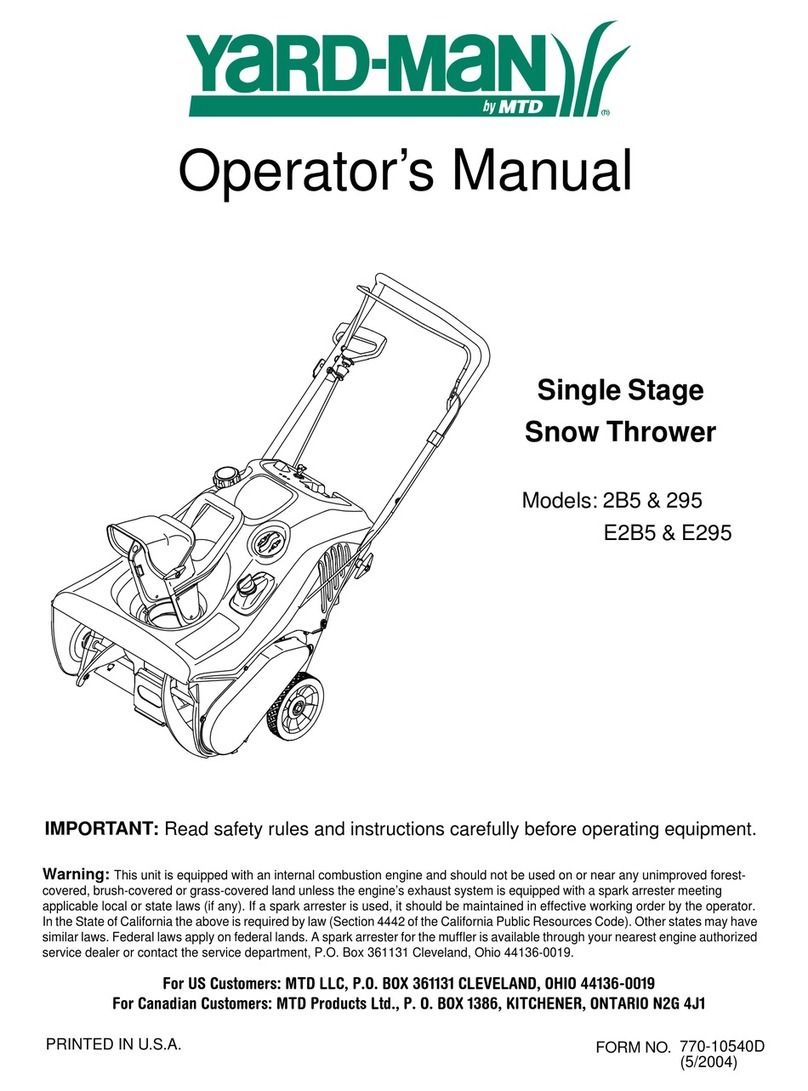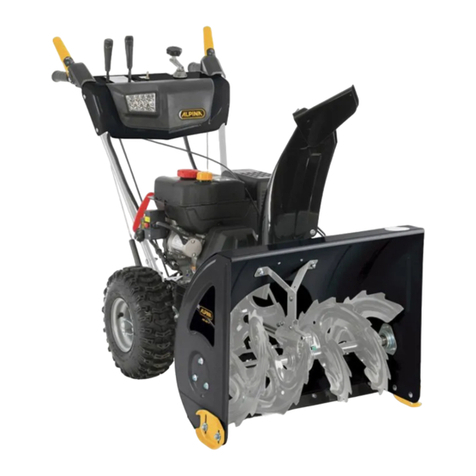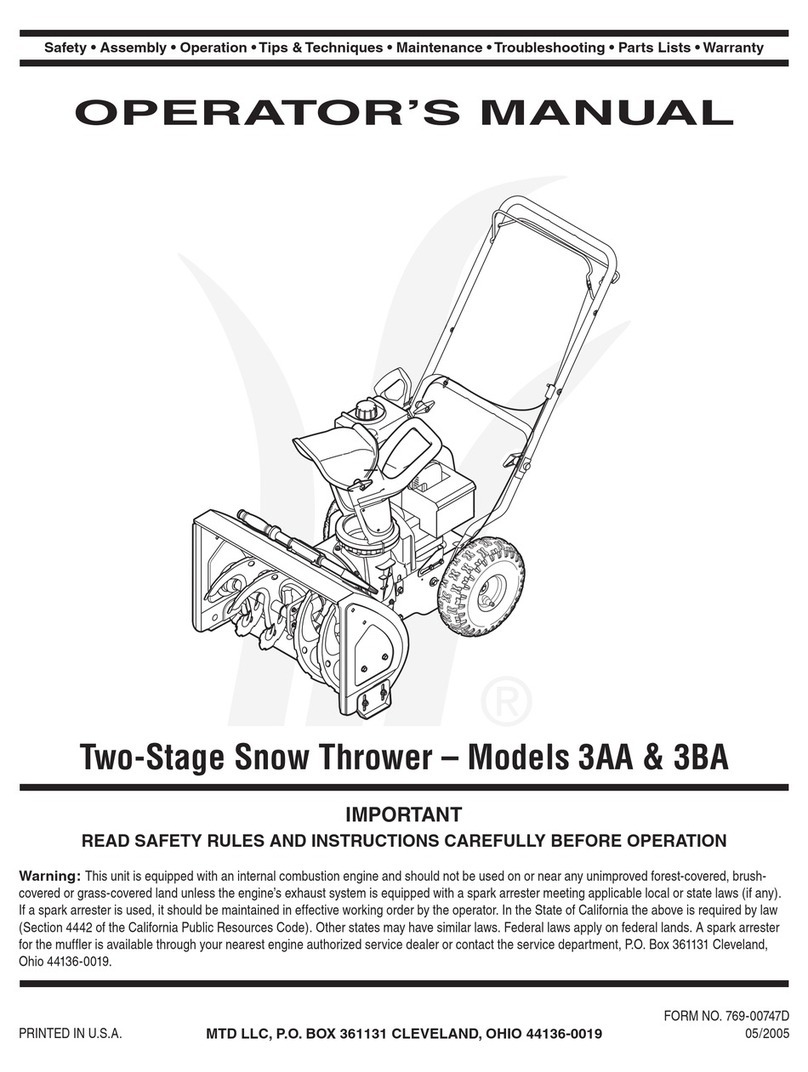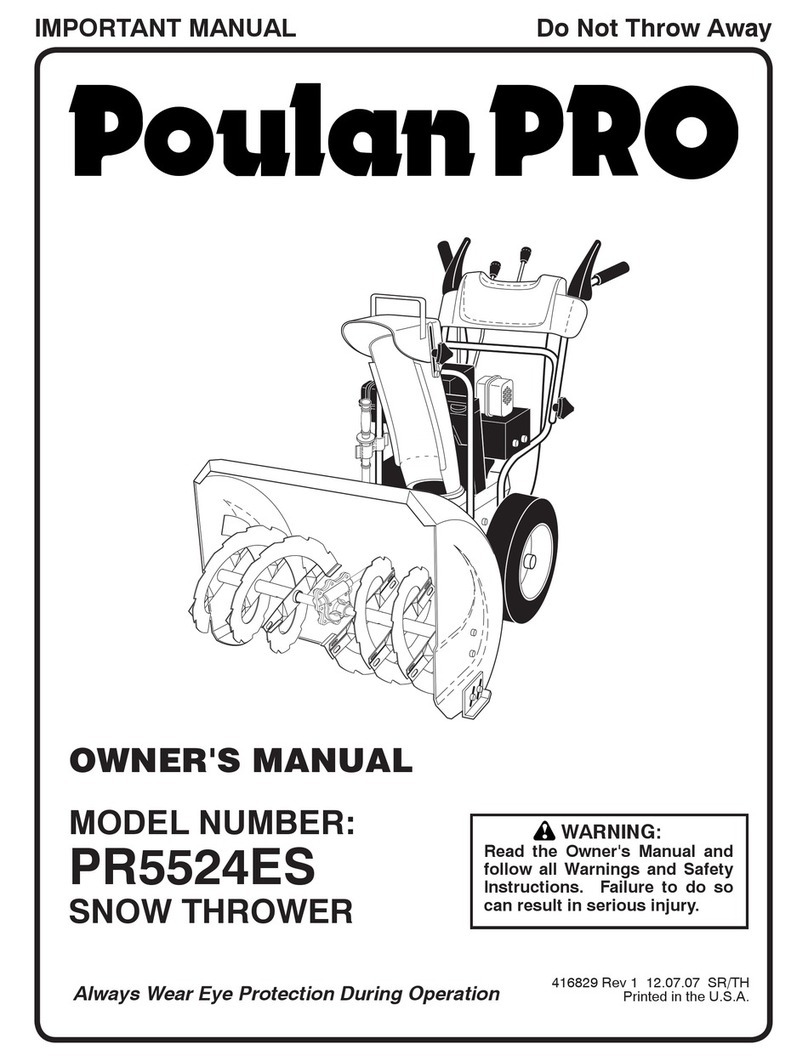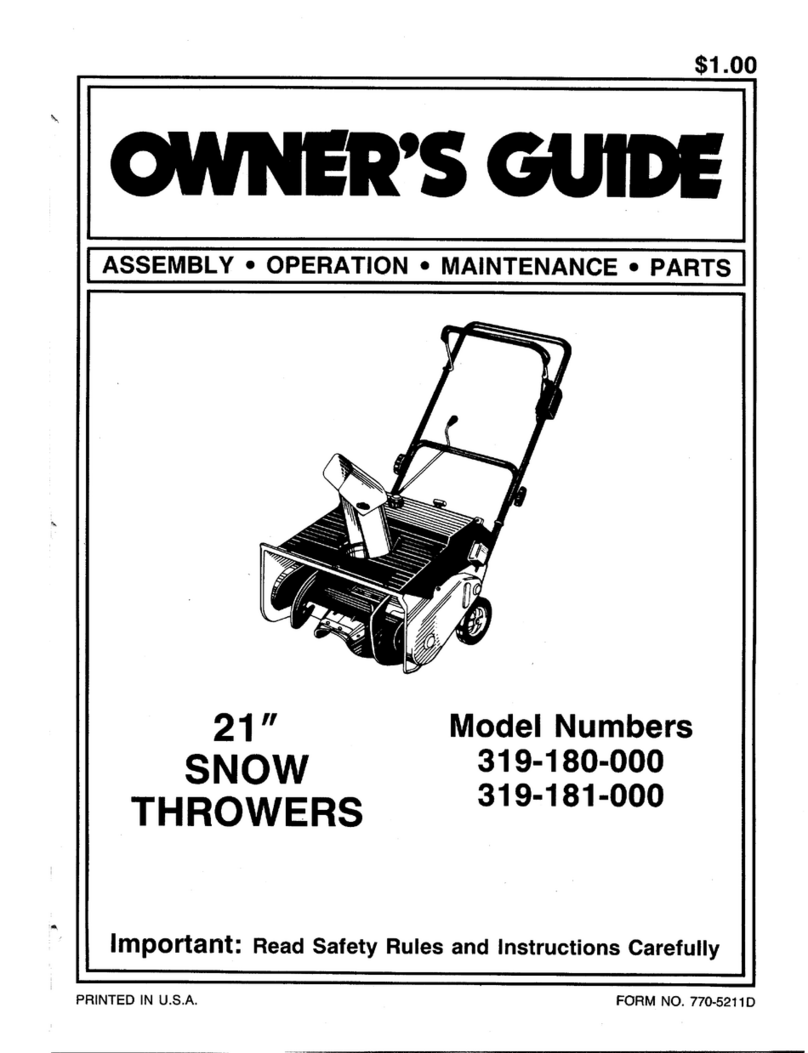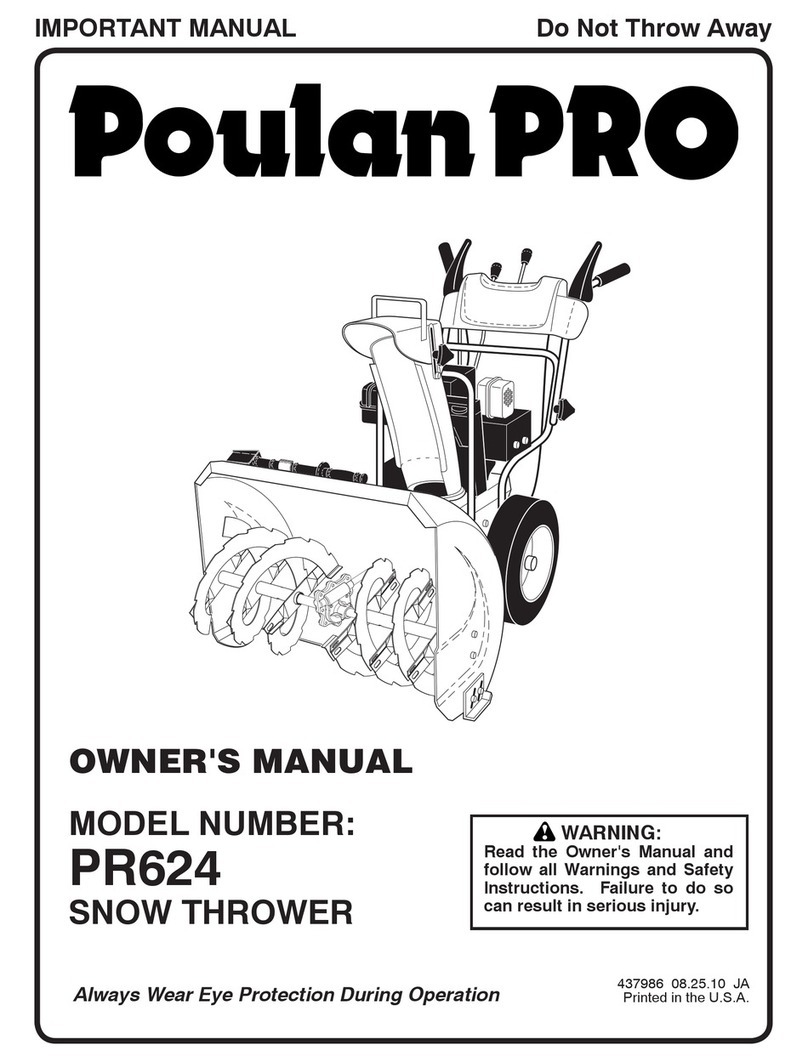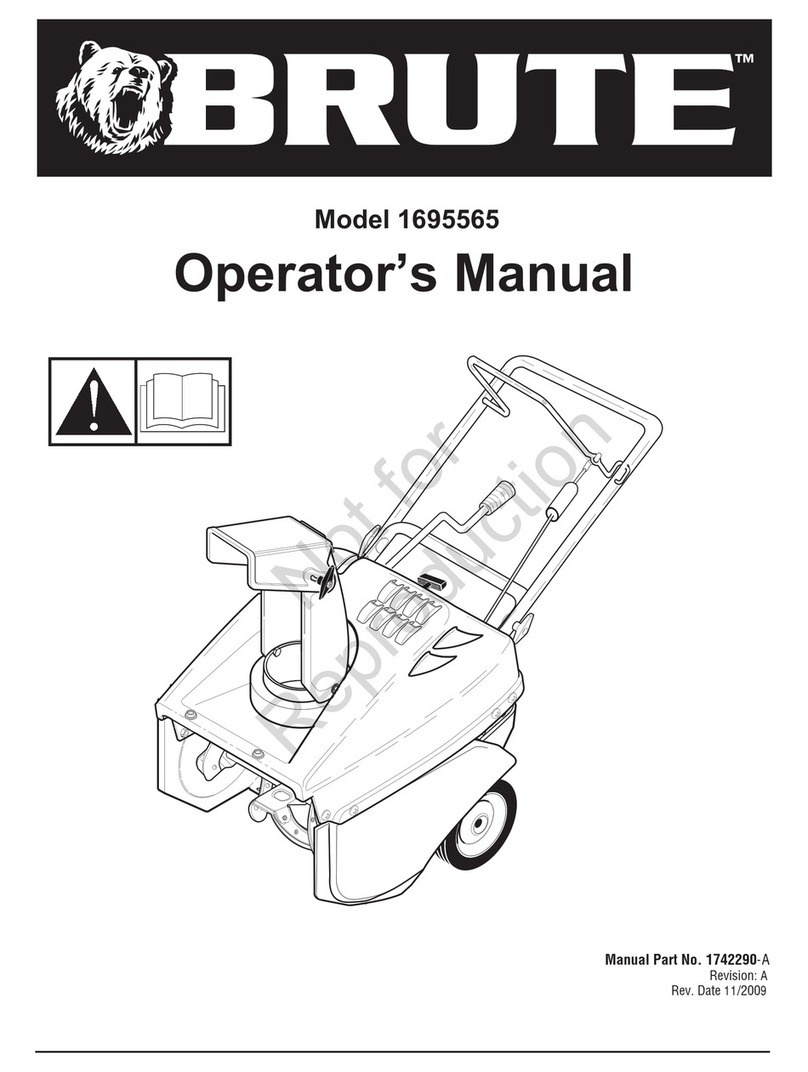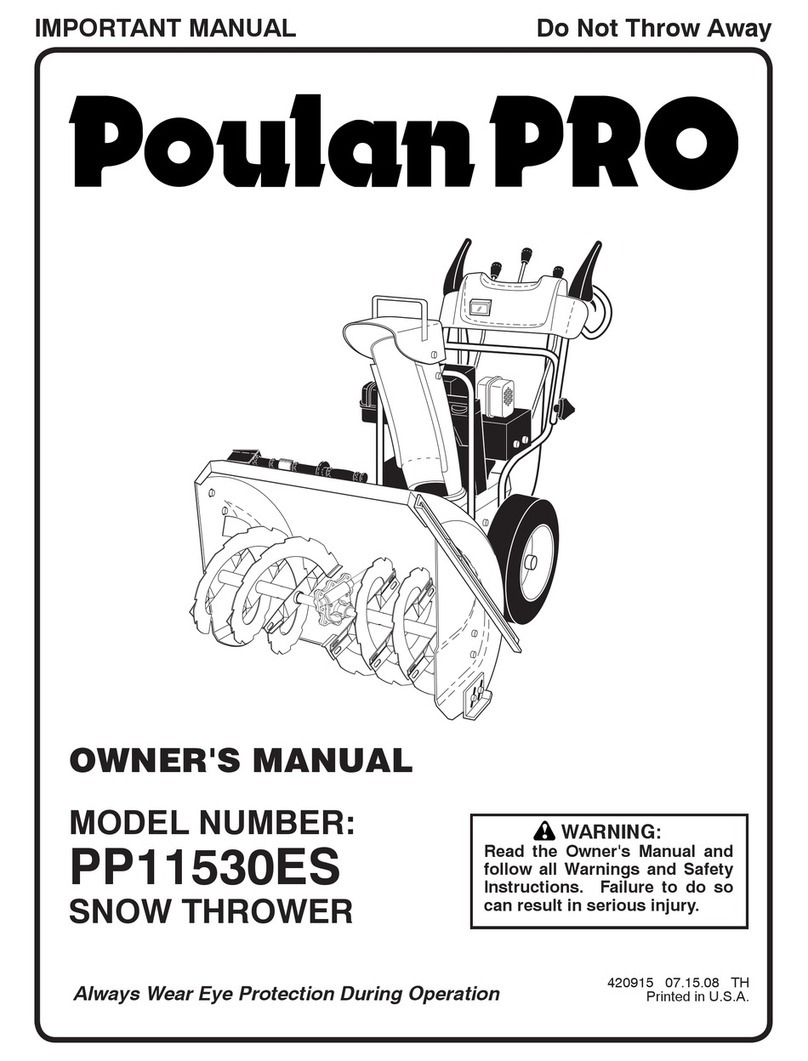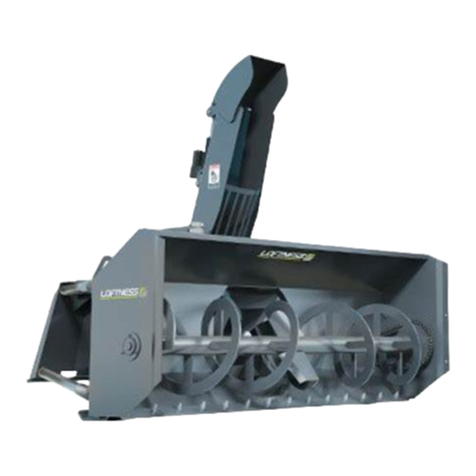
5
SAFETY
Whenever you see this symbol, it means Attention!
Become Alert! Your Safety is involved.
Failure to obey warnings or instructions can cause
personal injury or death.
Operating instructions must be given to everyone before operating this machine and at least once a year
thereafter in accordance with OSHA regulations.
General Safety Instructions
•Read the operator’s manual for the tractor to
become totally familiar with the controls and
instruments. Know how to stop all equipment
operation in case of emergency.
•
void the possibility of personal injury and/o
machine damage. NEVER exceed the maximum
recommended input power or speed
specifications for the power unit.
•Check and be sure all operating controls are in
neutral before starting the engine.
•Disengage PTO drive, lower the attachment to
rest flat on the skid shoes, stop engine, set park
brake, and wait for all motion to stop before
leaving the operator’s seat for any reason.
WARNING: Before adjusting, o
servicing the power unit, stop the
engine and relieve all hydrauli
pressure.
•Keep all shields, guards, and covers in place.
•NEVER make adjustments, lubricate, or perform
any service on the machine, power unit o
attachment while it is in operation.
•Keep people at least 100 feet (30m) away from
the attachment, power unit or tractor when they
are in operation.
•NEVER operate near embankments or terrain
that is so steep that rollover could occur.
•NEVER allow children or untrained persons to
operate.
•DO NOT permit riders on equipment.
•Use adequate safety warning lights and devices
as required by local regulations.
•Obey all local laws and regulations regarding
machine operation on public property.
This attachment is designed to move snow only.
NEVER operate this attachment in a manne
other than the intended use.
•Do not modify equipment or add attachments that
are not approved by Erskine Attachments LLC.
•Remember, YOU are responsible for the safe
operation and maintenance of the equipment.
Most accidents can be prevented. Good safety
practices not only protect you, but also the
people around you.
Wear Protective Equipment
•Protective clothing and equipment should be
worn.
•Wear clothing and equipment appropriate for the
job. Avoid loose fitting clothing.
•Prolonged exposure to loud noise can cause
hearing impairment or hearing loss. Wear
suitable hearing protection such as earmuffs or
earplugs.
•Operating equipment safely requires the full
attention of the operator. Avoid wearing radio
headphones while operating equipment.
Avoid High Pressure Fluids Hazard
•Escaping fluid under pressure can penetrate the
skin causing serious injury.
•
void the hazard by relieving the pressure
before disconnecting hydraulic lines.
•Use a piece of paper or cardboard, NOT BODY
PARTS, to check for suspected leaks. Wear
protective gloves and safety glasses or goggles
when working with hydraulic systems.
•If an accident occurs, see a doctor immediately.
ny fluid injected into the skin must be
surgically removed within a few hours or
gangrene may result.
